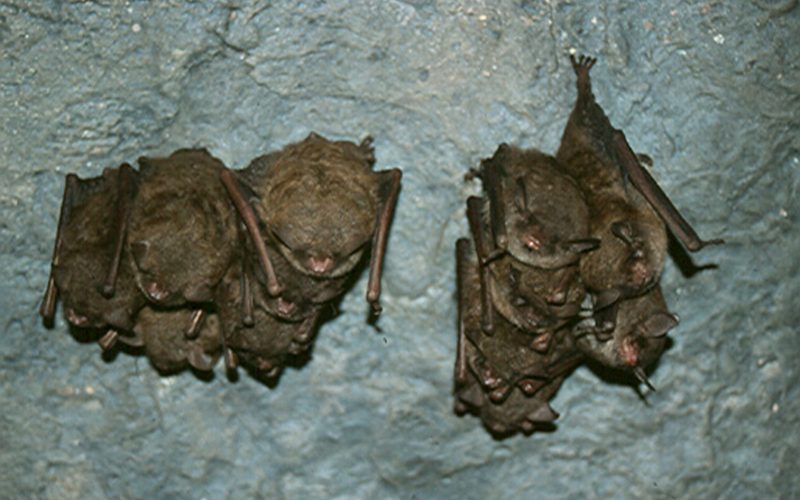
Courtesy Photo: Tri-colored bats are one of the species threatened by the mysterious disease, White-nosed syndrome (WNS) that is plaguing the nation's caves.
LOCALS STEP UP TO HELP SAVE SPECIES
In the past five years, millions of bats in the United States died from a mysterious disease called White-Nose Syndrome.
During the month of April, Devil’s Den State Park is making a concerted effort to spread the word about this deadly disease that continues to kill these valuable mammals. In June, Devil’s Den will continue their efforts to inform people about bats during their annual Bat-O-Rama.
Naturalists and researchers say there are more questions than answers regarding WNS. Its name refers to the white fungal growth found on the noses of infected bats. It is unclear whether the disease causes the bats to wake during hibernation and starve to death with no resources being available, or whether the wing damage caused by the infection is disrupting critical physiological functions such as heat dissipation, hydration, and gas exchange.
What is certain is that WNS is deadly. According to the U.S. Fish and Wildlife Service, as of Jan. 17, 2012, an estimated 5.7 million to 6.7 million bats died from WNS in 16 states and four Canadian provinces. Rebekah Penny, Devil’s Den translator, says that if “current transmission rates persist, WNS could spread across the United States, reaching 12 more species of bats, within the next decade.”
So who cares about bats? Aren’t they vicious little pests?
Not so, explains Penny. In fact, bats feed on pests that plague crops.
“Without bats, farmers will be inclined to use more pesticides, which are costly and leave unhealthy residues that we may ingest or that get into the soil and water, cascading through many ecosystems with detrimental effects. Bats are also critical species within cave food webs and play a role in protecting forest and prairies from being attacked by pests,” Penny says.
While humans do not contract the disease, they could be spreading the fungus. The fungus, which originated in Europe, has been transferred to other ecosystems in which the bats have not evolved a resistance. In attempts to limit the spreading of the fungus, all federally and state managed caves in Arkansas were closed in 2010.
At Devil’s Den, though, visitors are disappointed to find they can no longer explore the caves. Penny says they “are always relieved to know that White-Nose Syndrome is not communicable to humans.”
They are also relieved to learn that local bats have not been infected by WNS.
Earlier this year, Devil’s Den interpreters joined Blake Sasse, a mammalogist for the Arkansas Game & Fish Commission, to survey the bat populations of the park.
Thankfully, no evidence of the deadly fungus was seen.
However, the disease is creeping nearer. Just this month, in Jefferson, Mo., the syndrome was found in a little brown bat from one public cave and in two tri-colored bats from a second public cave north of St. Louis.
Devil’s Den State Park is asking folks to make a pledge to protect the bats. This is the focus of April Awareness at the park.
Park interpreters are making a concerted effort to inform the public about their role in not only the spread of the disease but also in the serious impact that loss of bats could have on humans. Steps we can all take include:
• Staying out of caves and mines where bats are known or suspected to hibernate. Humans may be accidentally spreading the disease without even knowing it. Since it is a microscopic soil fungus, you could pick it up on the bottom of your shoe, a backpack strap or hat and not even know it. Once in an area, it can be spread between bats and quickly move into surrounding areas. While transmission is usually from bat to bat, there have been suspicious jumps between infected bats over longer distances than they’re likely to travel. Humans frequent most of these sites.
• Report any unusual bat behavior, such as flying during daylight hours or roosting on the outside of structures when they should be hibernating, to the Arkansas Game & Fish Commission.
• Help uninfected bats survive by building bat habitats around your home. If you have bats and don’t want them, don’t kill them. Ask for help from the Arkansas Game and Fish Commission.
The potential impact that the loss of bat populations could have on humans is grave. Penny reports “bats provide over $22 billion in crop protection annually by eating many pest insects.”










